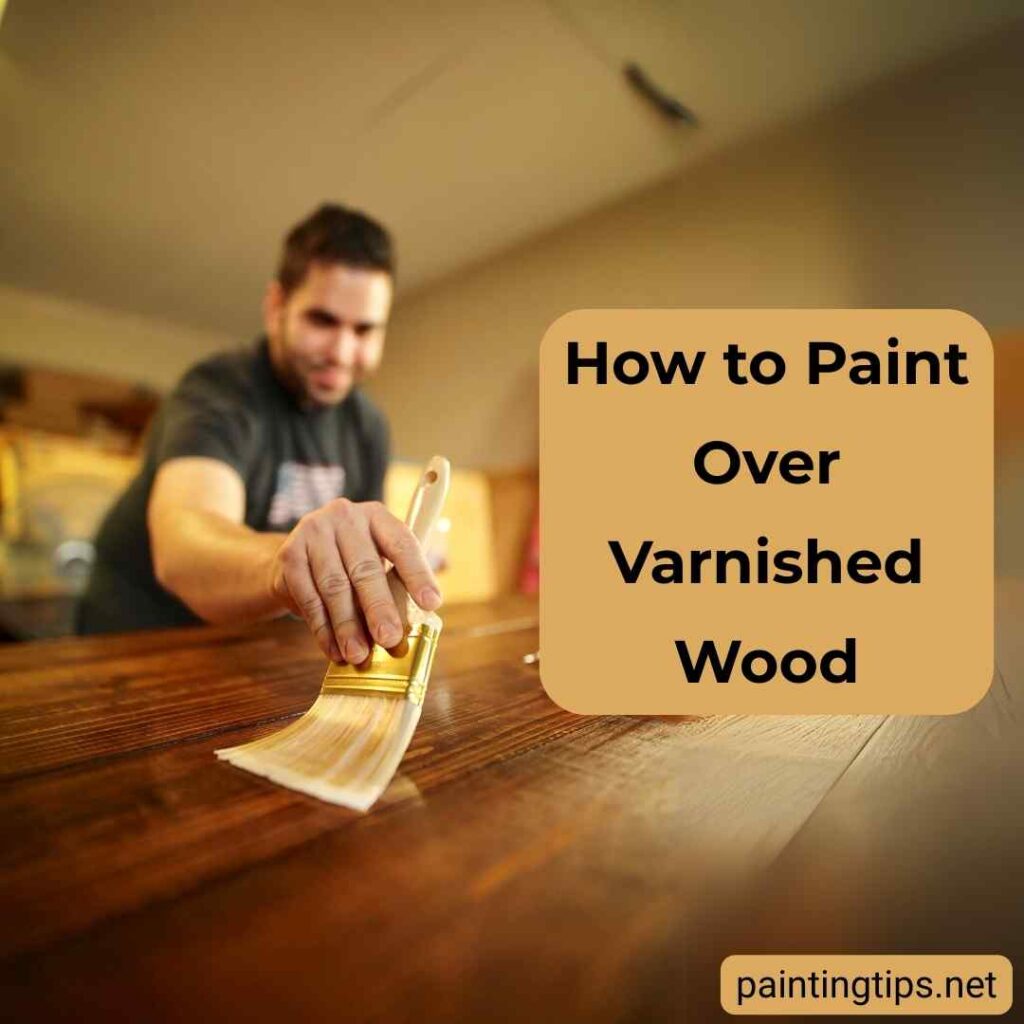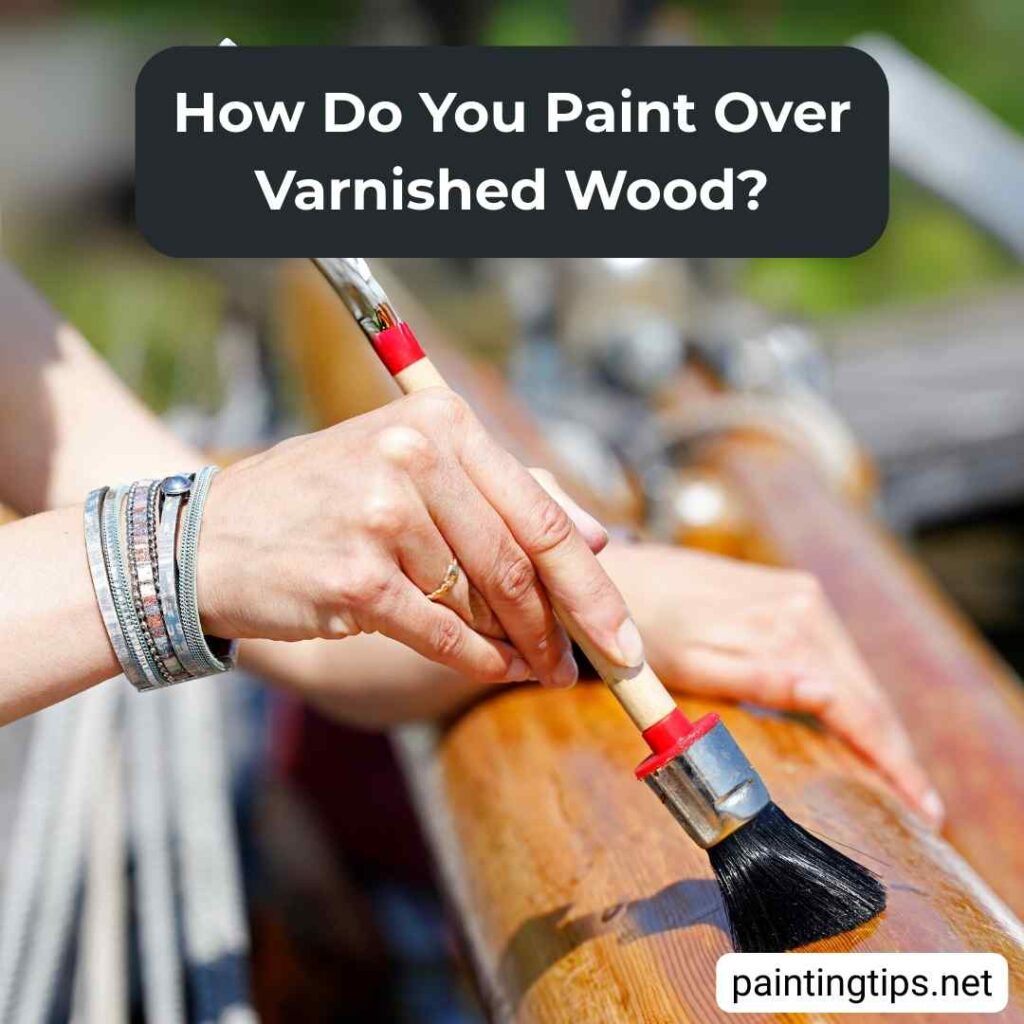Painting over varnished wood might seem tricky at first, especially if you’re not sure whether paint will stick to the glossy surface. Varnish creates a smooth, protective finish that resists moisture and wear—but it also resists paint. Whether you’re updating old furniture, trim, or cabinets, knowing how to properly prep and paint varnished wood is key to achieving a smooth, long-lasting finish. In this guide, we’ll cover everything you need to know about painting varnished wood, from sanding and priming to selecting the right paint.
How to Paint Varnished Wood

Varnish creates a hard, protective layer on wood. Thanks to this coating, the wood becomes resistant to harsh weather conditions and scratches. The smooth, glossy surface of varnished wood also makes it much easier to clean. However, that shiny, smooth finish is not ideal for repainting. That’s why some surface prep is essential before painting varnished wood.
Before painting over varnished wood, you have a few prep options: sanding the varnish, applying a primer, or using a heat gun to soften the varnish before scraping it off. These steps take time—but they’re necessary to ensure your new paint job lasts.
Can You Paint Over Varnished Wood?
We don’t recommend painting directly over varnished wood. The smooth varnish layer prevents paint from adhering properly, which can lead to peeling or chipping in a short period. However, by removing or priming the varnish layer, you can successfully paint varnished wood and achieve long-lasting results.
What Happens If You Paint Over Varnished Wood Without Prep?
Skipping prep before painting varnished wood can lead to serious adhesion problems. Paint simply doesn’t stick well to glossy or slippery varnished surfaces. If you paint directly over varnish, the paint will likely peel over time, resulting in a blotchy, unattractive finish.
On the other hand, taking the time to sand, prime, or scrape the surface will save you from repainting again soon. Prepping might feel like a hassle, but it helps you get a smooth, durable finish when you paint varnished wood.
What’s the Best Paint for Varnished Wood?
You shouldn’t paint directly on varnished wood without proper preparation. Without proper prep, most paints will fail to adhere. If you’re in a situation where you must paint without prep, epoxy paint may work for small projects, and oil-based paint is a better option for larger surfaces.
Still, we strongly recommend lightly sanding the varnished surface first. Once the surface is dull and roughened up, you can easily use acrylic, latex, or other water-based paints to repaint the wood. Sanding allows these paints to bond better and last longer.
Can You Paint Over Stained Wood Without Sanding?
Yes, you can paint over varnished wood without sanding, although sanding is still one of the best ways to help paint adhere properly. If you’d rather avoid sanding, there are a couple of effective alternatives. One option is to use a heat gun to soften the varnish and then carefully scrape it off.
Another, and often easier, method is to apply a high-quality bonding primer that’s specifically designed to adhere to glossy or varnished wood surfaces. Among these choices, priming is usually the simplest and most efficient way to ensure good paint adhesion without the extra effort of sanding.
What Is the Best Primer for Varnished Wood?
The best primer for varnished wood without sanding depends on the type of paint you plan to use. For varnished wood being painted with oil-based paints, a synthetic oil-based primer is the best option. If you’re using acrylic, latex, or other water-based paints, a water-based primer is ideal for painting varnished wood. Both general primers and bonding primers are effective in prepping the surface and enhancing paint adhesion. Here are the best primers you can use before painting a varnished wood.
- Zinsser Bulls Eye 1-2-3 Primer (water-based)
- Zinsser B-I-N Shellac-Based Primer
- KILZ Adhesion Primer (water-based)
- INSL-X STIX Bonding Primer (water-based)
How Do You Paint Over Varnished Wood?

Before you paint varnished wood, make sure the surface is roughened or that the varnish has been completely removed. You can either sand the entire varnish layer off or apply one of the primers listed above. If you decide to paint directly over the varnish, at the very least, sand the surface lightly to reduce gloss and create a better bond for the paint. A 200-grit sanding sponge or standard sandpaper is usually enough for this job.
If you sanded the surface, make sure to wipe off the dust with a damp cloth. If you applied primer instead, let it dry completely before painting. For water-based primers, let it dry for at least 4 hours. For oil-based primers, allow 12 hours or more.
Now you’re ready to paint. If you’re using acrylic or another water-based paint, apply two coats and allow at least 4 hours between each coat. If you’re using an oil-based paint or finish, wait at least 12 hours between coats. This will help the paint bond properly to the varnished wood and provide a smooth, durable finish.
Tip: Before you start painting varnished wood, it may be helpful to read articles on ‘How to Paint MDF‘ and ‘How to Repaint Particle Board.
Tools You Will Need
- 3-inch soft-bristle brush
- Foam roller or short-nap roller
- 200-grit sandpaper
- Bonding primer
- Water-based or oil-based paint